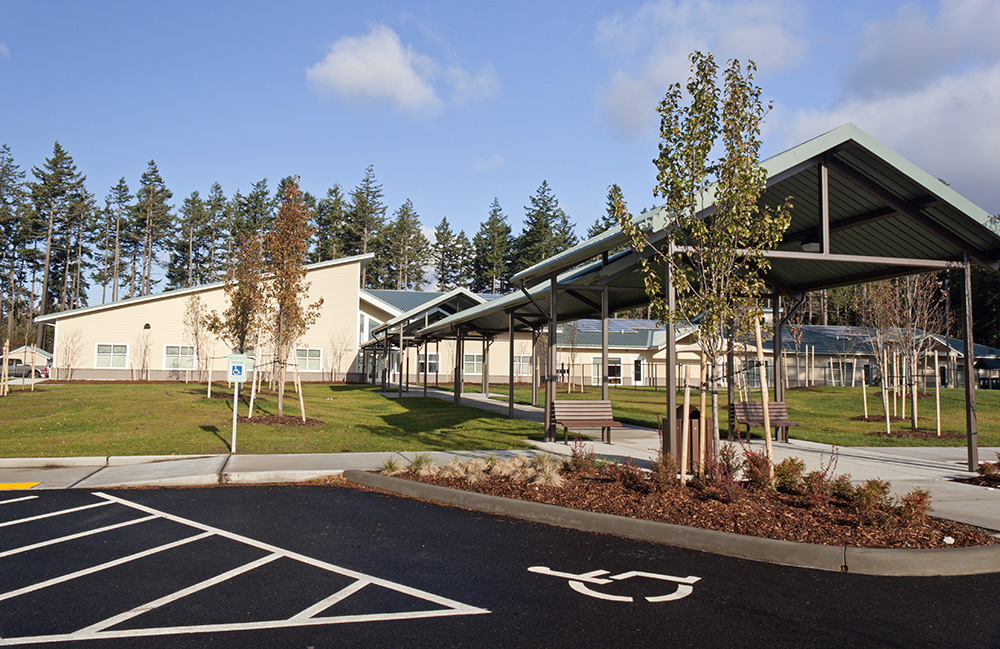Child Development Center, Naval Air Station Whidbey Island – Construction team led by Vets Northwest. Design team led by Fraser Fogle Architects;civil & structural engineering by Reid Middleton.
The Department of Defense (DoD) Anti-terrorism Standards are rules that must be followed for construction of military facilities. The standards represent a “significant commitment by DoD to seek effective ways to minimize the likelihood of mass casualties from terrorist attacks against DoD personnel in the buildings in which they work and live.” [Unified Facilities Criteria (UFC) 4-010-01 DoD Minimum Antiterrorism Standards for Buildings, February 9, 2012]
These standards are commonly known in the building design and construction industry as Anti-Terrorism Force Protection standards or ATFP for short.
While the evolving needs of anti-terrorism security have placed restrictions on the layout of facilities, it is important to keep the needs of the facility user in mind during the design process.
A common requirement on military facility projects for site and building design is to provide a minimum distance of open space between a building and vehicle parking or access driveways. For most buildings, this distance is 16 to 40 feet inside a secured area and 66 to 105 feet outside a secured area; variation is based on building use and construction methods. The purpose of this “standoff distance” between a building and vehicles is to prevent the approach of a terrorist vehicle containing explosives.
While this requirement is necessary for security in today’s world, a common challenge for these projects is to locate parking lots such that the standoff distances are met while still providing a safe and convenient route to the building. This is especially troublesome for facilities such as medical clinics or daycare centers, as the greater distance can be inconvenient or difficult for parents with small children or people who are injured or disabled.
The accessibility problem can be mitigated in several ways. The effects of the longer distance between the parking lot and the building can be minimized by effective site layout design. Grading the site to keep the approach to the building level and avoiding steps or ramps makes the greater distance less intimidating. Walkways that are wide and flat are more inviting for people riding in wheelchairs, using crutches, or pushing strollers. And, providing a cover over long walkways protects patrons from the weather and eliminates the feeling that they need to hurry to get out of the rain.
It’s not enough to simply meet the ATFP standards or building code. All design requires consideration of safety requirements, but user convenience and aesthetics are just as important to today’s design professional. Facility users and owners expect and deserve a balance between security and usability.


